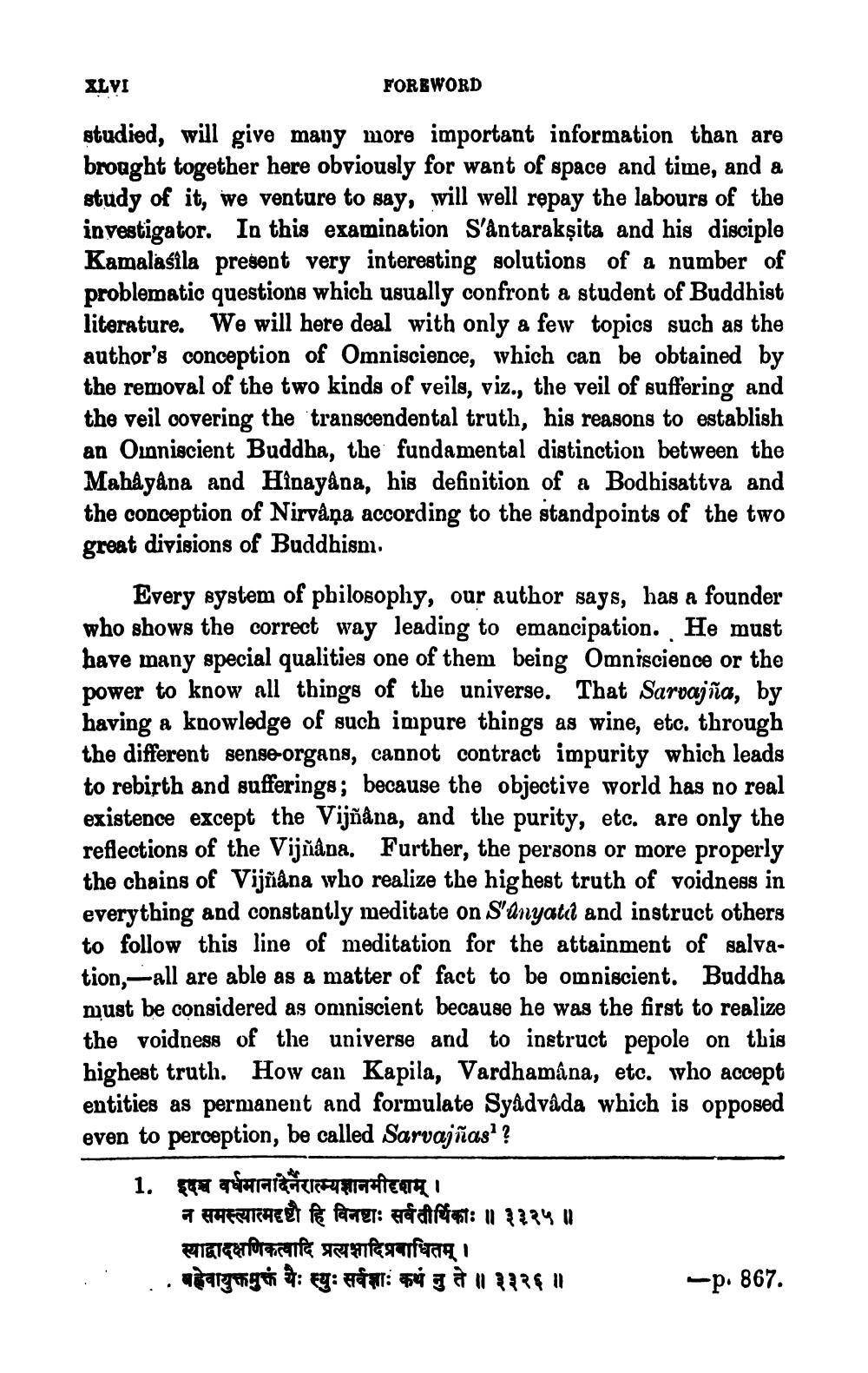________________
XLVI
FOREWORD
studied, will give many more important information than are brought together here obviously for want of space and time, and a study of it, we venture to say, will well repay the labours of the investigator. In this examination S'ântarakṣita and his disciple Kamalasila present very interesting solutions of a number of problematic questions which usually confront a student of Buddhist literature. We will here deal with only a few topics such as the author's conception of Omniscience, which can be obtained by the removal of the two kinds of veils, viz., the veil of suffering and the veil covering the transcendental truth, his reasons to establish an Omniscient Buddha, the fundamental distinction between the Mahayana and Hinayâna, his definition of a Bodhisattva and the conception of Nirvâna according to the standpoints of the two great divisions of Buddhism.
Every system of philosophy, our author says, has a founder who shows the correct way leading to emancipation. He must have many special qualities one of them being Omniscience or the power to know all things of the universe. That Sarvajña, by having a knowledge of such impure things as wine, etc. through the different sense-organs, cannot contract impurity which leads to rebirth and sufferings; because the objective world has no real existence except the Vijñâna, and the purity, etc. are only the reflections of the Vijñâna. Further, the persons or more properly the chains of Vijñâna who realize the highest truth of voidness in everything and constantly meditate on S'anyata and instruct others to follow this line of meditation for the attainment of salvation, all are able as a matter of fact to be omniscient. Buddha must be considered as omniscient because he was the first to realize the voidness of the universe and to instruct pepole on this highest truth. How can Kapila, Vardhamâna, etc. who accept entities as permanent and formulate Syâdvâda which is opposed even to perception, be called Sarvajñas1?
1.
इदच वर्धमानादेनैरात्म्यज्ञानमीदृशम् ।
a amezukazû fe fazer: addiffiant: 11 3334 ||
स्याद्वादक्षणिकत्वादि प्रत्यक्षादिप्रबाधितम् । बहेवायुक्तमुक्तं यैः स्युः सर्वशाः कथं नु ते ॥ ३३२६ ॥
-p. 867.




